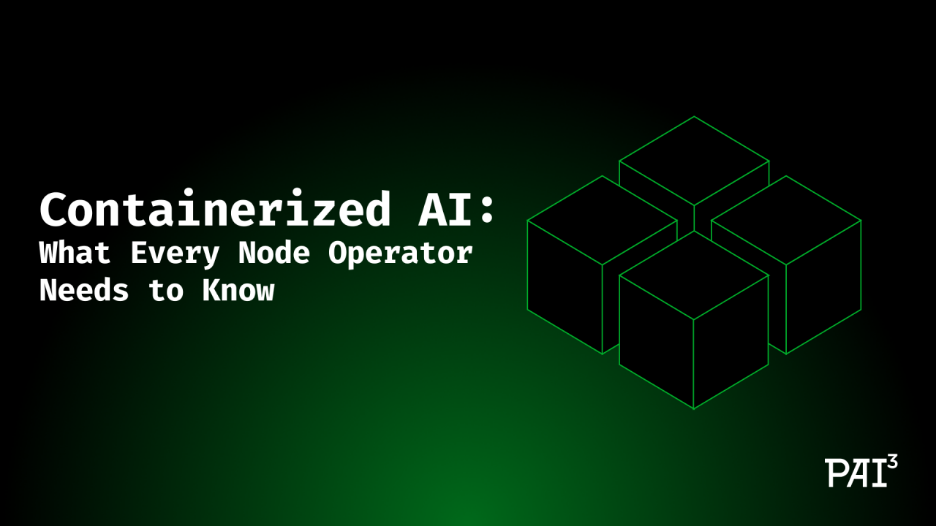
Why Most People Waste Their AI Prompts ? How to Fix It...
In the current landscape of AI technology, many users struggle with crafting effective prompts. This article explores common pitfalls and offers actionable strategies to unlock the true potential of AI tools like GPT-5.
Dev Orbit
July 27, 2025
Introduction
As artificial intelligence continues to evolve, one of the most significant challenges users face is how to create effective prompts that yield meaningful results. Many individuals dive into the world of AI with high hopes but quickly find themselves frustrated by the outputs generated by models such as GPT-5. The reality is that a poorly structured prompt can lead to wasted time and resources. This blog post promises to guide you through an understanding of why most users struggle with their AI prompts and how you can improve your approach to harness the full power of AI effectively.
Understanding the Nature of AI Prompts
To address the issue of wasted AI prompts, it’s essential to understand what a prompt is and how it interacts with models like GPT-5. A prompt is essentially a set of instructions or a question that you provide to the AI model. The quality of these prompts significantly influences the quality of the responses you receive.
Here are some critical aspects concerning AI prompts:
Clarity: Ambiguous prompts lead to ambiguous responses. Being clear and concise increases the likelihood of receiving accurate and relevant results.
Specificity: The more specific you are in your prompt, the better the model can tailor its response. General queries often yield generic answers.
Context: Providing background information or context enables the AI to understand the nuances required for a better response.
For instance, instead of asking, “Tell me about web development,” a more specific prompt would be, “What are the key differences between front-end and back-end web development?” This kind of specificity directs the AI toward providing detailed and focused information.
The Impact of Poorly Structured Prompts
Many users do not realize that a poorly structured prompt can lead to a cascade of issues. The consequences of wasting AI prompts can be significant:
Time Wasted: When users repeatedly submit unclear or broad prompts, they spend considerable time sifting through unhelpful or irrelevant information.
Missed Opportunities: Inefficient prompts may lead to missed opportunities for generating innovative ideas or solutions. An effective prompt can yield compelling insights, while a vague one often falls flat.
Frustration and Burnout: Users may quickly become frustrated with the AI’s lack of useful output and abandon their projects, leading to burnout.
For example, consider a software engineer trying to optimize a part of their code. If they input, “Optimize my Python code,” they might receive vague suggestions. In contrast, a more structured prompt like, “How can I improve the efficiency of this sorting function in Python?” can yield targeted and actionable feedback.
Common Mistakes in Crafting AI Prompts
Many mistakes could lead to wasted potential when crafting AI prompts. Here are some of the most common missteps:
Overloading the Prompt: While including comprehensive details is beneficial, bombarding the AI with too much information can confuse it. Keeping prompts precise while offering essential context is crucial.
Neglecting the Audience: It’s easy to forget who your target audience is when formulating prompts. For example, a business prompt aimed at a technical team should differ from one directed at non-technical stakeholders.
Avoiding Iteration: Users often provide a single prompt and wait for a perfect response, neglecting the iterative nature of the AI. Experimenting with variations of prompts can lead to significantly better outputs.
For instance, a marketing professional seeking to create ad copy may initially pose the question, “Write an advertisement for my product.” Instead, they should consider refining their queries by asking, “What are three catchy headlines for my eco-friendly cleaning product targeting young families?” This clarity leads to improved output.
Strategies for Crafting Effective AI Prompts
To ensure that you utilize your AI prompts effectively, consider implementing the following strategies:
Start with a Clear Objective: Before formulating a prompt, define the goal you want to achieve. Whether it’s generating ideas or solving a problem, clarity of objective is crucial.
Utilize Examples: Providing examples can guide AI toward your desired outcome. For instance, if you’re looking for a specific tone in writing, share a sample paragraph.
Break Down Complex Queries: If your question has multiple parts, consider breaking it down into smaller, manageable queries. This makes it easier for the AI to process and respond accurately.
For example, if you need help with creating a full marketing strategy, start with simpler prompts: “What are the key components of a marketing strategy?” Follow up with specific questions like “How do I identify my target audience?”
Bonus/Advanced Tips for AI Prompt Mastery
Once you grasp the basic strategies, consider these advanced tips to refine your prompt crafting:
Leverage Variables: If you frequently generate similar outputs, consider using variables to maintain efficiency. This can keep your prompts dynamic while ensuring you hit the mark consistently.
Assess the AI’s Feedback: After receiving output, evaluate the AI’s responses critically. This reflection will allow you to adjust your prompts accordingly and drive better results in the future.
Collaborative Prompting: Engage with fellow users or professionals in your field to exchange prompt ideas. Collaboration can lead to discovering unique angles or perspectives you might not have considered.
For instance, if you are a developer seeking code enhancements using prompts, share your best performing prompts in forums or communities to understand how others have refined their approaches.
Conclusion
In conclusion, most individuals struggle with AI prompts due to lack of understanding, poor structuring, and common pitfalls. By recognizing these challenges and implementing effective strategies, you can transform your interactions with AI tools like GPT-5 into productive experiences. Remember to start with clear objectives, provide context, and refine your prompts iteratively. Now is the time to take these insights into action; share your experiences, and elevate your capacity to generate relevant AI outputs.

Enjoyed this article?
Subscribe to our newsletter and never miss out on new articles and updates.
More from Dev Orbit

Tamron 16–30mm F/2.8 Di III VXD G2 for Sony E-Mount Listed for Pre-Order on Amazon US
Discover the latest offering in wide-angle photography with the Tamron 16–30mm F/2.8 Di III VXD G2 lens for Sony E-Mount, now available for pre-order on Amazon US. This article delves deep into its specifications, unique features and its potential impact on your photographic journey. From its advanced optical design to performance benchmarks, we’ll explore everything that makes this lens a must-have for both amateur and professional photographers.

From Autocompletion to Agentic Reasoning: The Evolution of AI Code Assistants
Discover how AI code assistants have progressed from simple autocompletion tools to highly sophisticated systems capable of agentic reasoning. This article explores the innovations driving this transformation and what it means for developers and technical teams alike.

How to Build an App Like SpicyChat AI: A Complete Video Chat Platform Guide
Are you intrigued by the concept of creating your own video chat platform like SpicyChat AI? In this comprehensive guide, we will walk you through the essentials of building a robust app that not only facilitates seamless video communication but also leverages cutting-edge technology such as artificial intelligence. By the end of this post, you'll have a clear roadmap to make your video chat application a reality, incorporating intriguing features that enhance user experience.

NestJS Knex Example: Step-by-Step Guide to Building Scalable SQL Application
Are you trying to use Knex.js with NestJS but feeling lost? You're not alone. While NestJS is packed with modern features, integrating it with SQL query builders like Knex requires a bit of setup. This beginner-friendly guide walks you through how to connect Knex with NestJS from scratch, covering configuration, migrations, query examples, real-world use cases and best practices. Whether you're using PostgreSQL, MySQL or SQLite, this comprehensive tutorial will help you build powerful and scalable SQL-based applications using Knex and NestJS.

GitHub Copilot vs Tabnine (2025): Which AI Assistant is Best?
AI coding assistants are no longer futuristic experiments—they’re becoming essential tools in the modern developer’s workflow. In this review, we’ll compare GitHub Copilot and Tabnine head-to-head in 2025, exploring how each performs in real-world backend coding tasks. From productivity gains to code quality, we’ll answer the burning question: Which AI assistant should you trust with your code?

Unlocking WASI: The Future of Serverless with WebAssembly
Discover how WASI is transforming serverless computing with secure, portable WebAssembly runtimes for the cloud era.
Releted Blogs

World Models: Machines That actually “Think”
Discover how advanced AI systems, often dubbed world models, are set to revolutionize the way machines interpret and interact with their environment. Dive deep into the underpinnings of machine cognition and explore practical applications.

Temperature, Top-P, Top-K — Explained One More Time
This comprehensive guide delves into the intricacies of temperature, top-p, and top-k parameters in AI language models. Whether you're a developer or researcher, you'll learn how to leverage these settings to improve your model's performance and get the most out of AI-generated content.

Mastering Git Hooks for Automated Code Quality Checks and CI/CD Efficiency
Automate code quality and streamline your CI/CD pipelines with Git hooks. This step-by-step tutorial shows full-stack developers, DevOps engineers, and team leads how to implement automated checks at the source — before bad code ever hits your repositories.

You’re Using ChatGPT Wrong: Try This Underground Prompting Method Instead
Unlock the full potential of ChatGPT with innovative prompting techniques that elevate your conversations and outputs. Learn how to interact with AI like a pro by diving deep into unique and effective methods that go beyond typical usage. This post unveils the underground prompting strategies that can lead to richer, more contextual AI interactions.

Containerized AI: What Every Node Operator Needs to Know
In the rapidly evolving landscape of artificial intelligence, containerization has emerged as a crucial methodology for deploying AI models efficiently. For node operators, understanding the interplay between containers and AI systems can unlock substantial benefits in scalability and resource management. In this guide, we'll delve into what every node operator needs to be aware of when integrating containerized AI into their operations, from foundational concepts to practical considerations.

Deep Dive into Error Handling and Logging in Node.js
Mastering the essentials of error handling and logging in Node.js for more resilient backends.
Have a story to tell?
Join our community of writers and share your insights with the world.
Start Writing